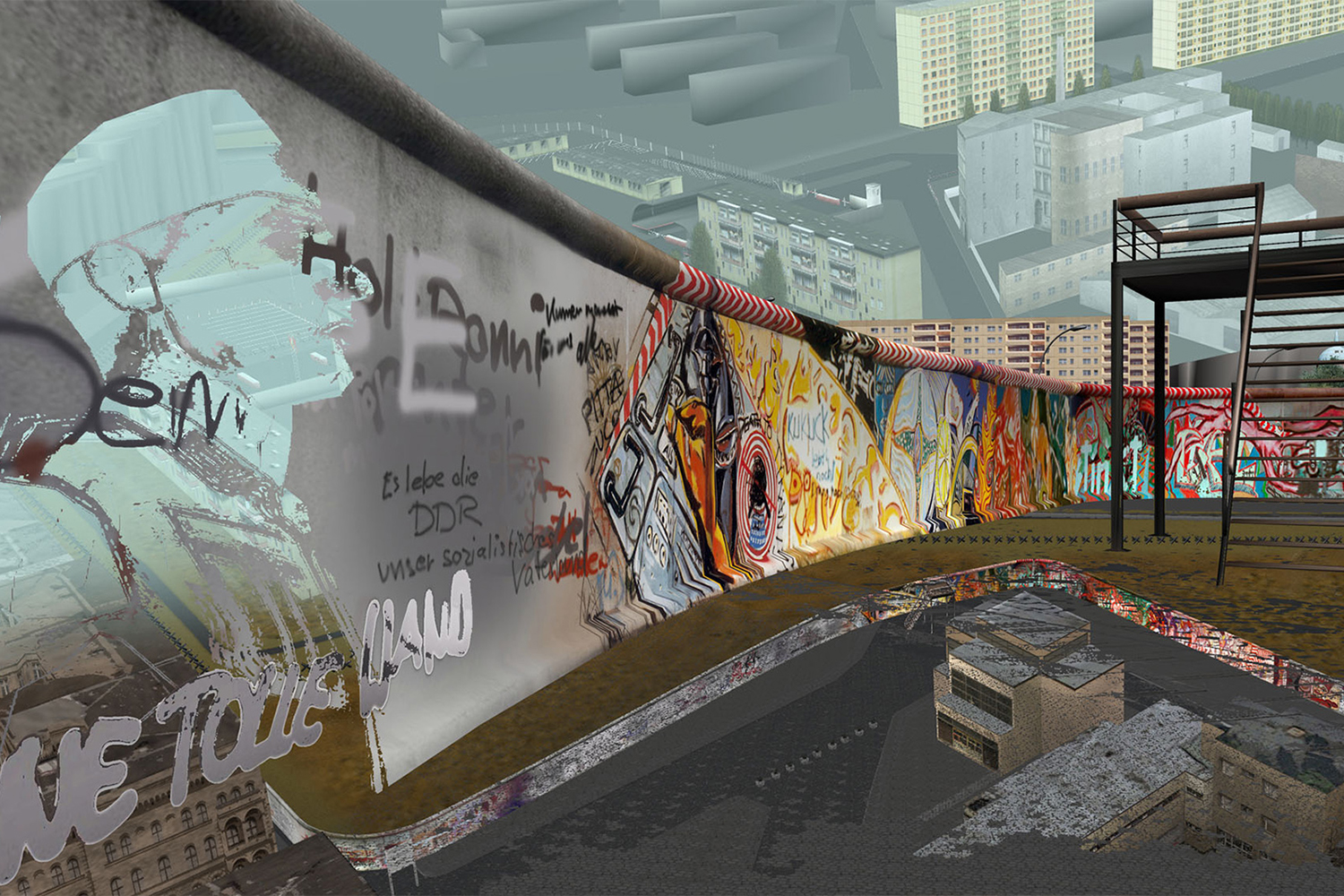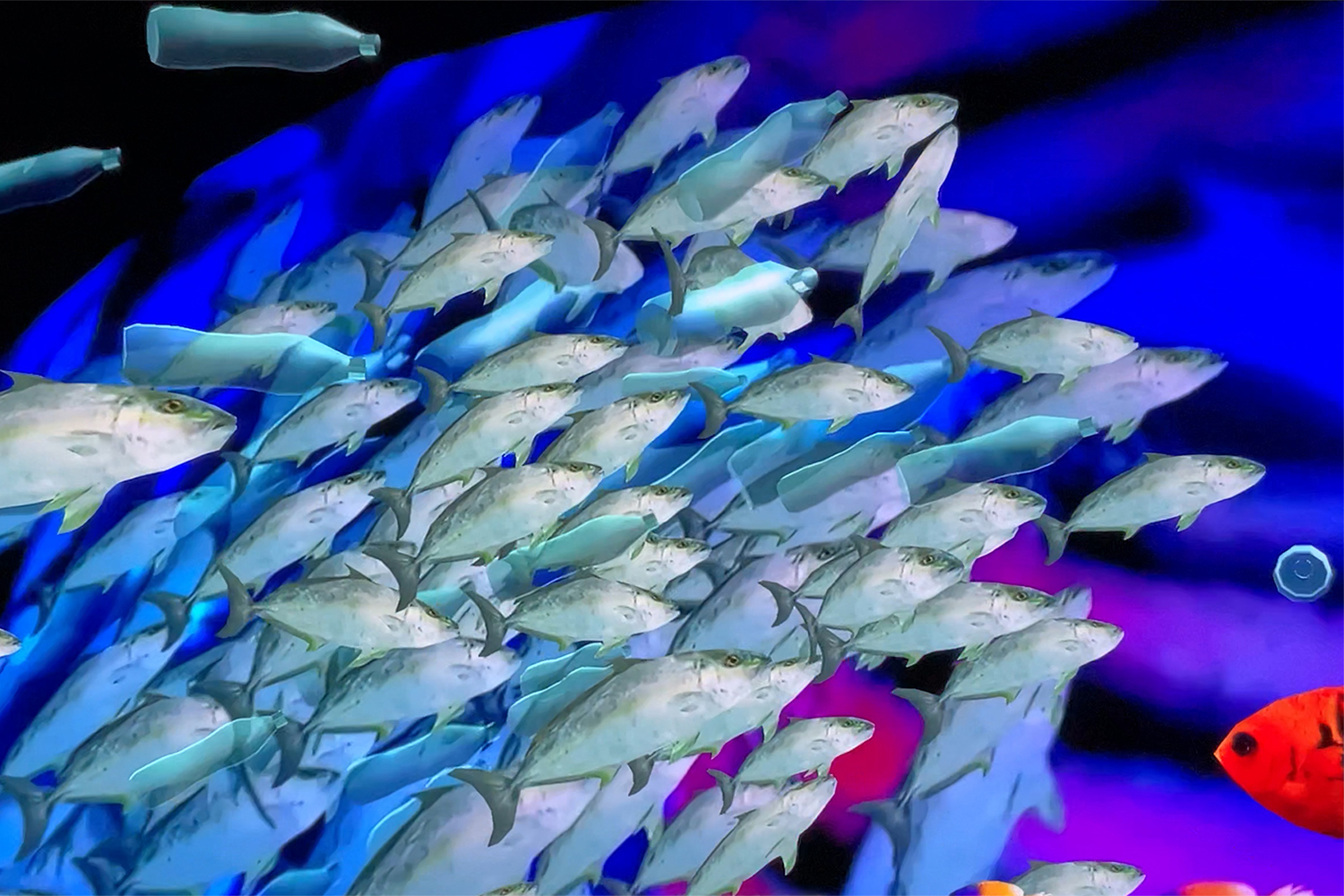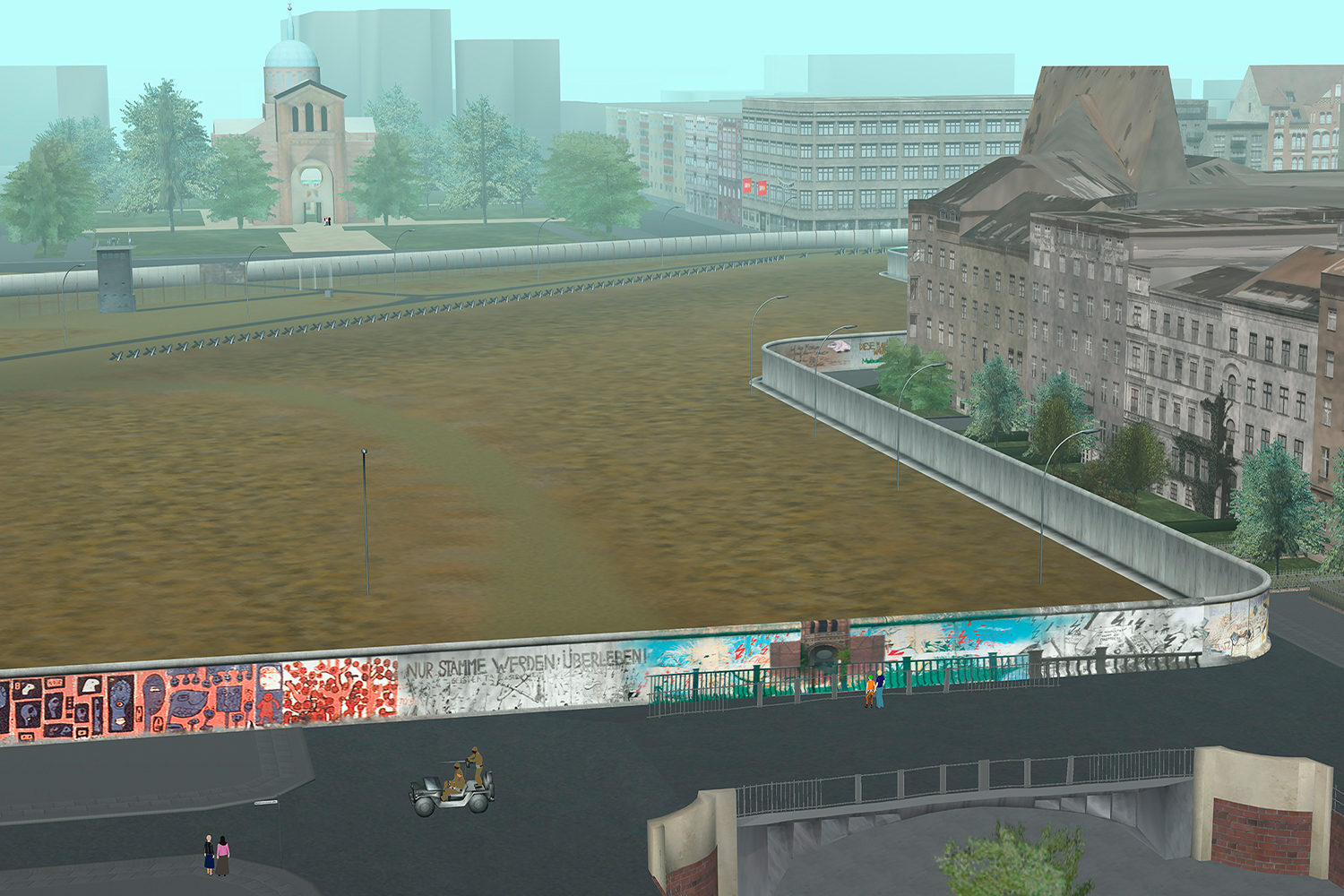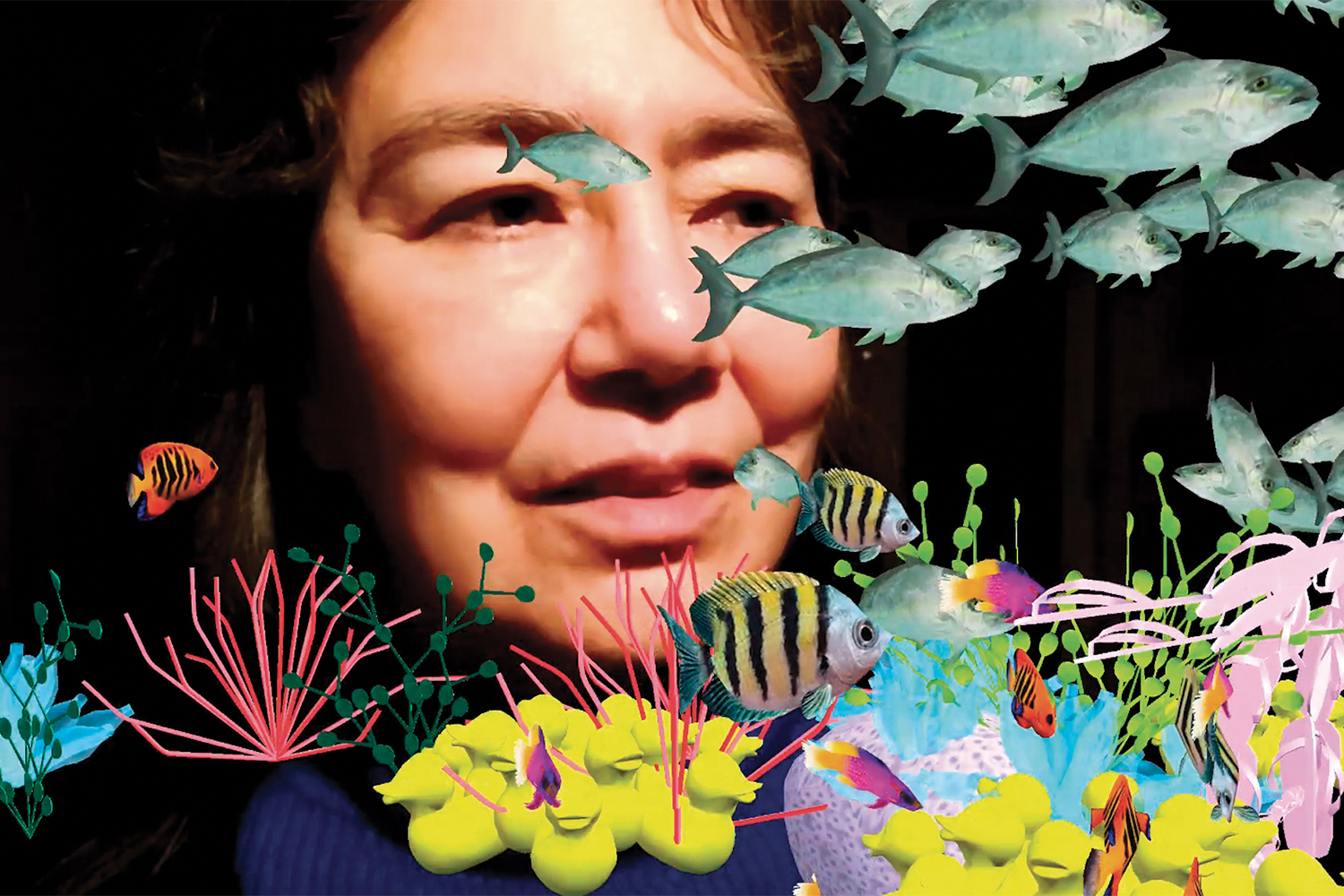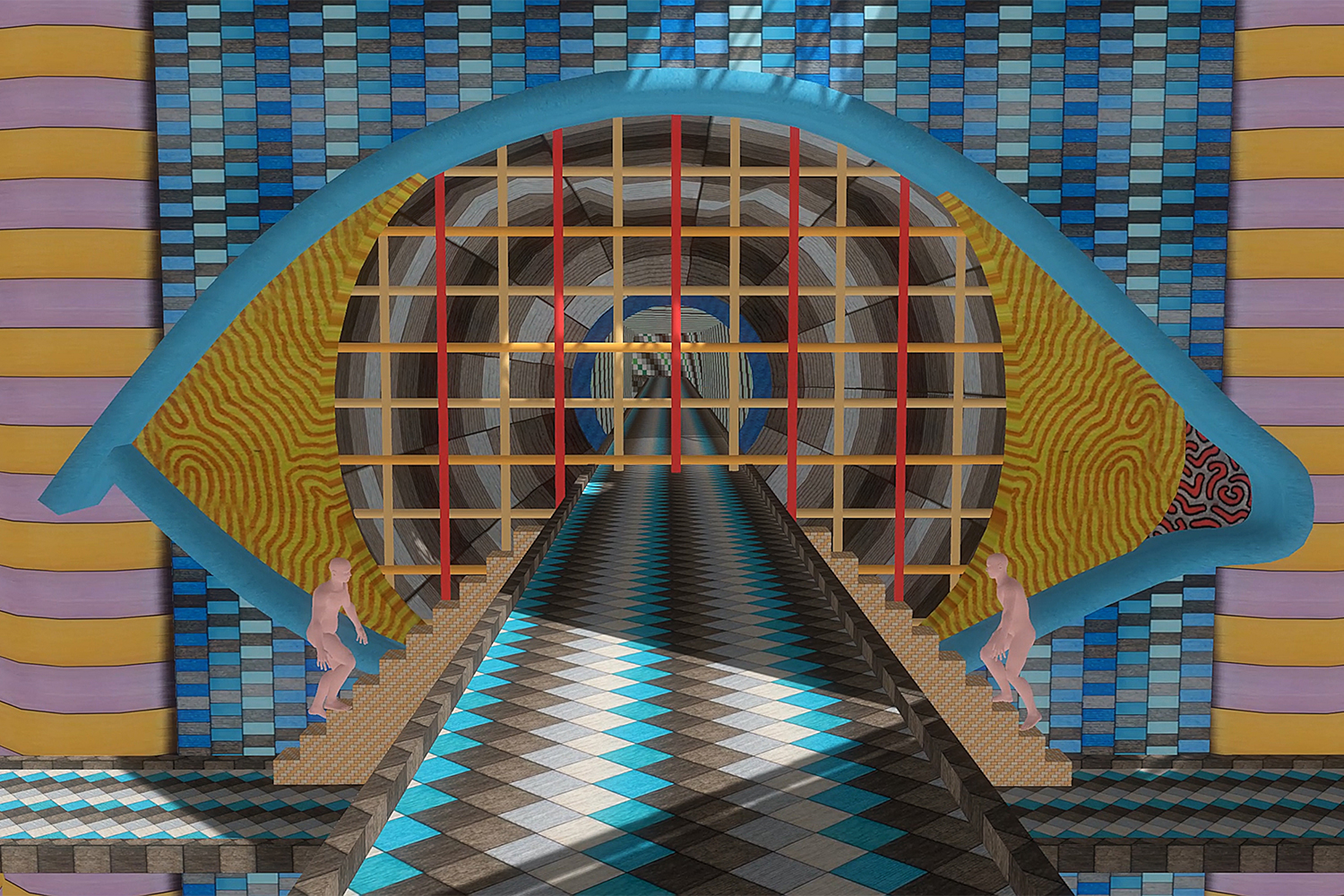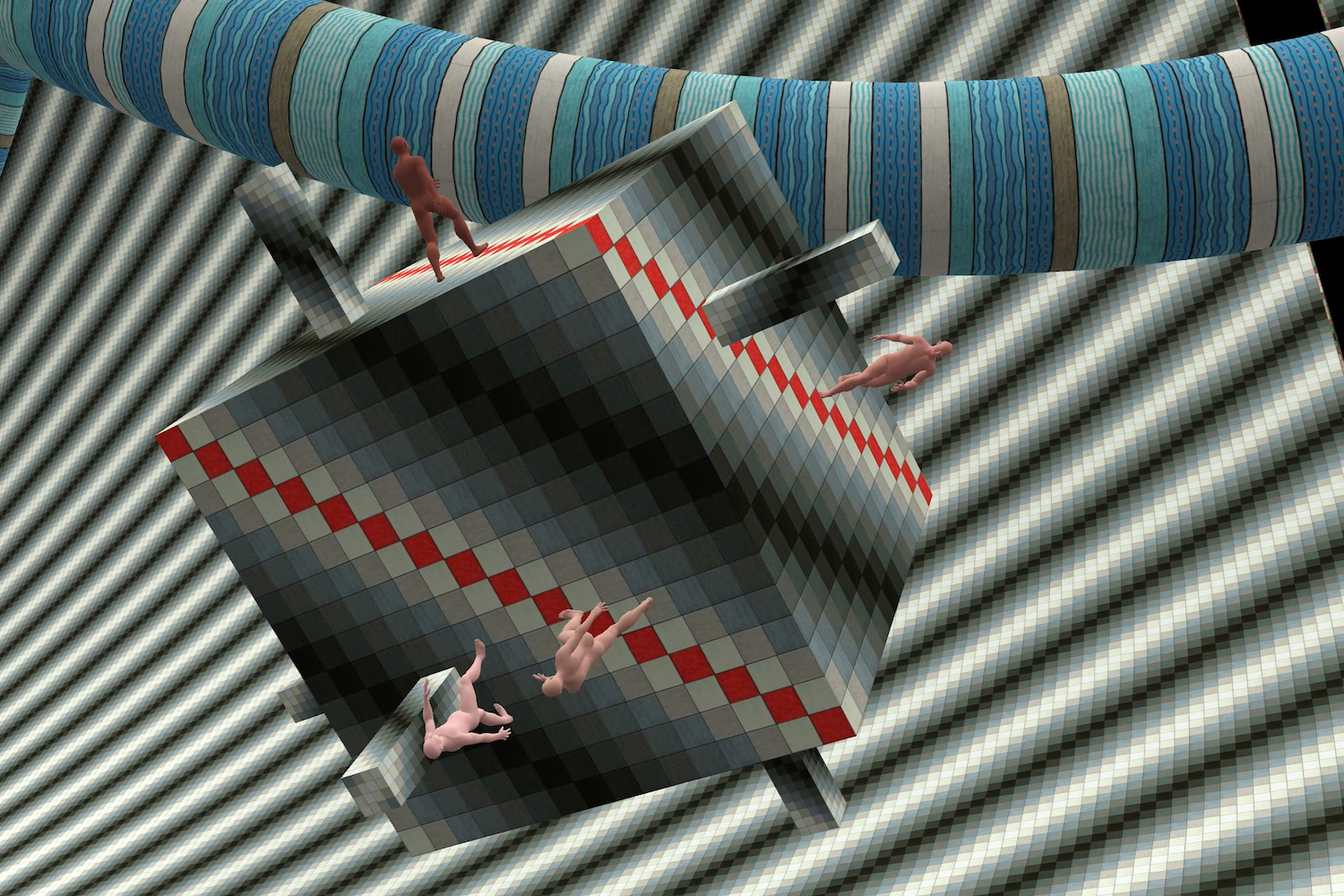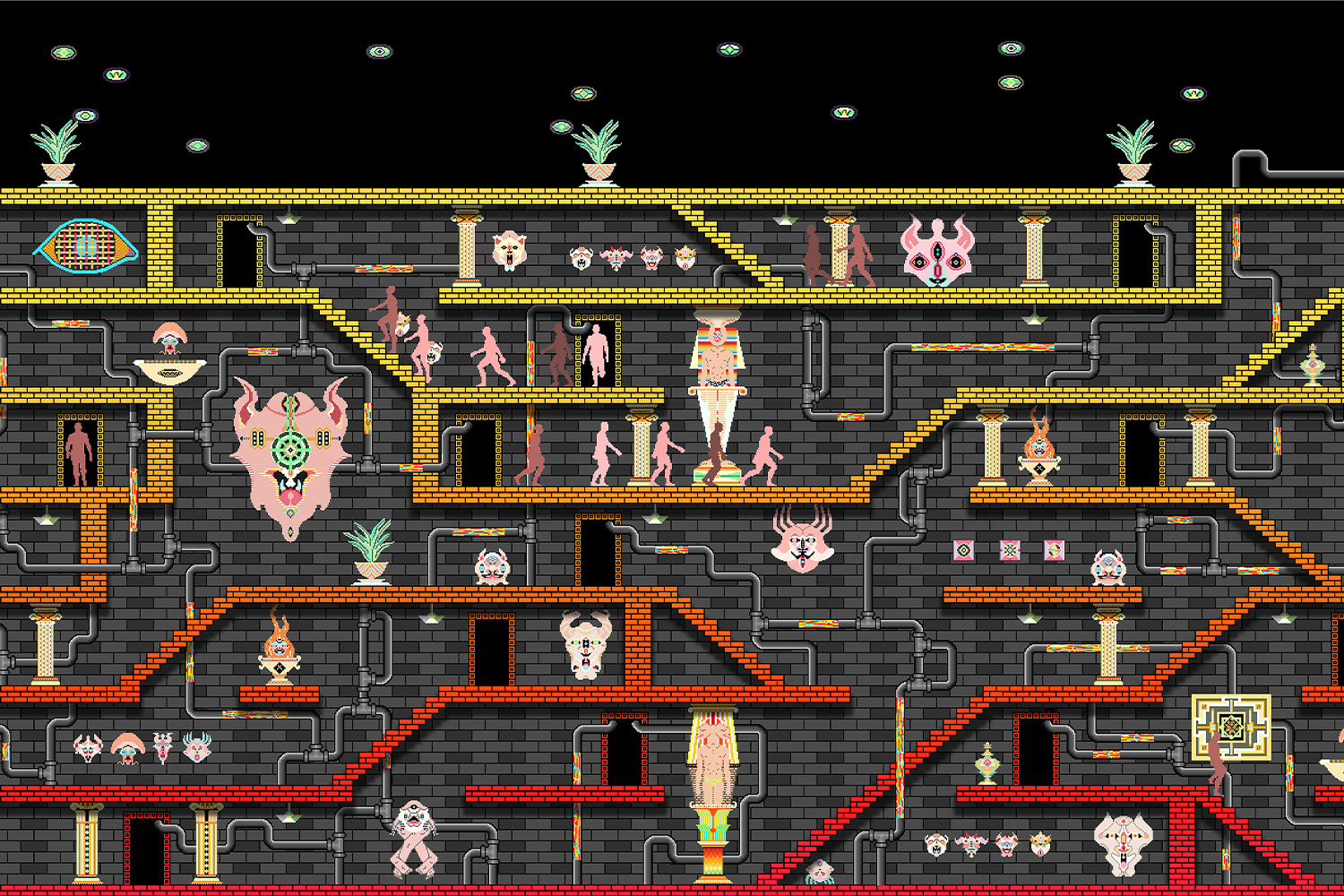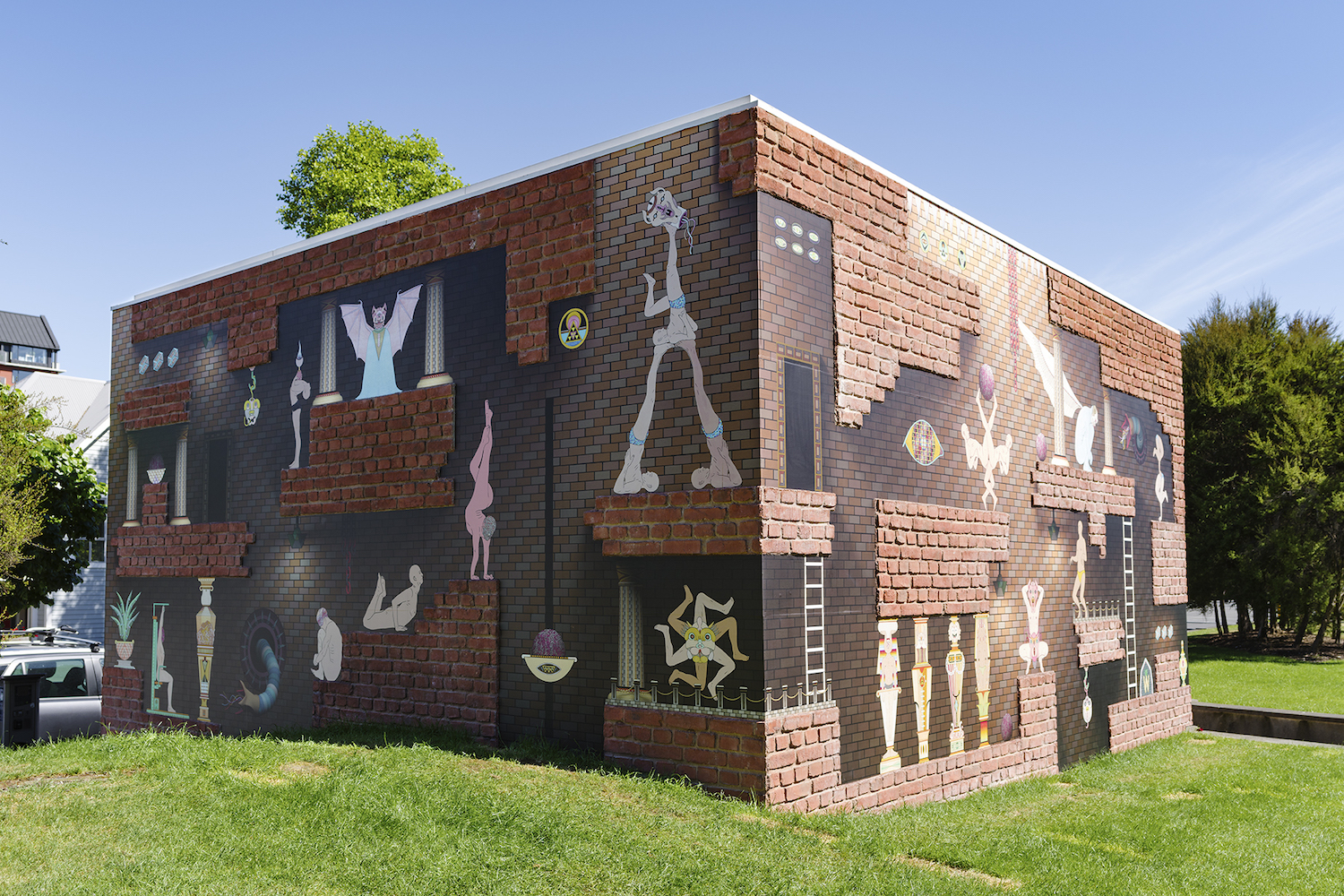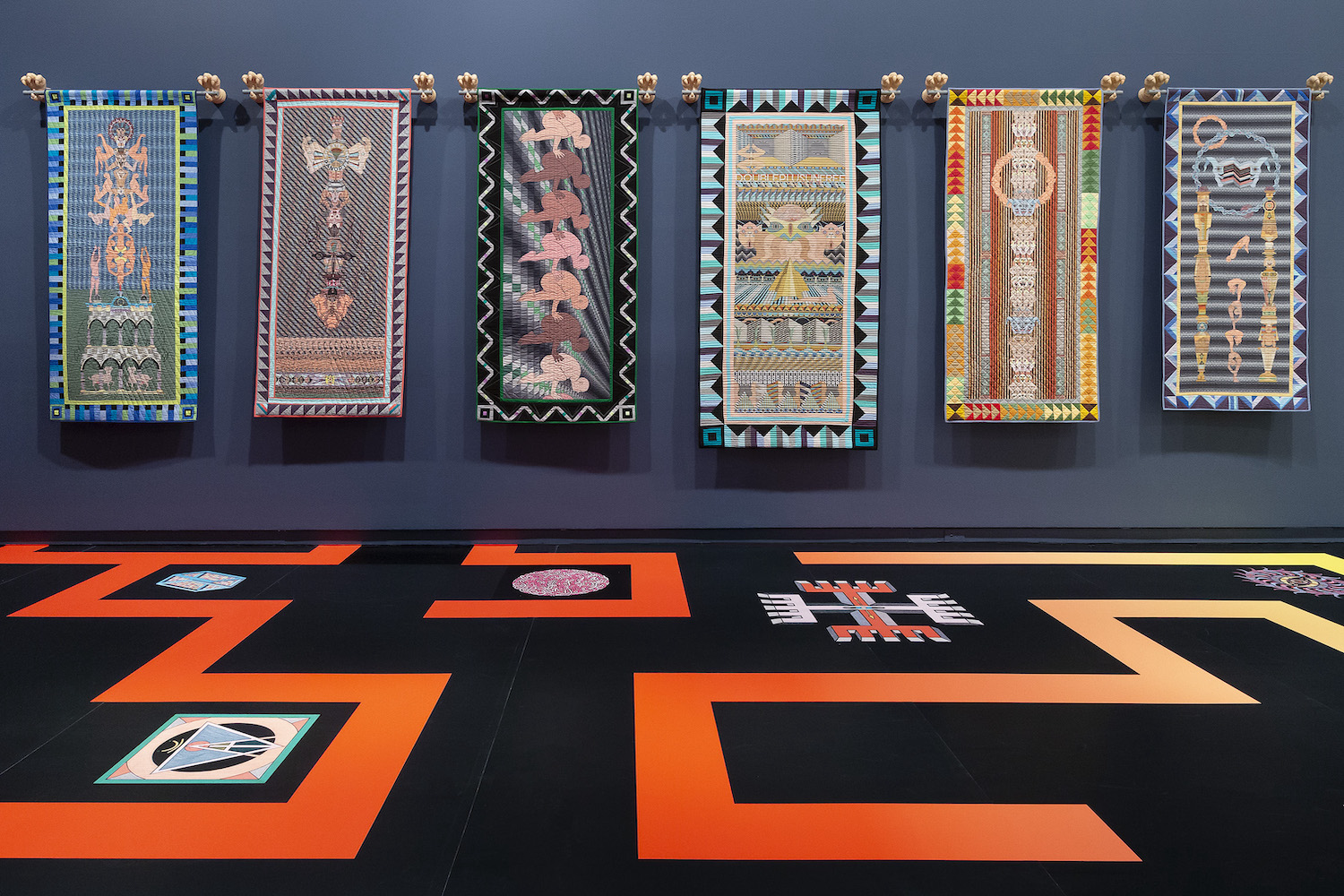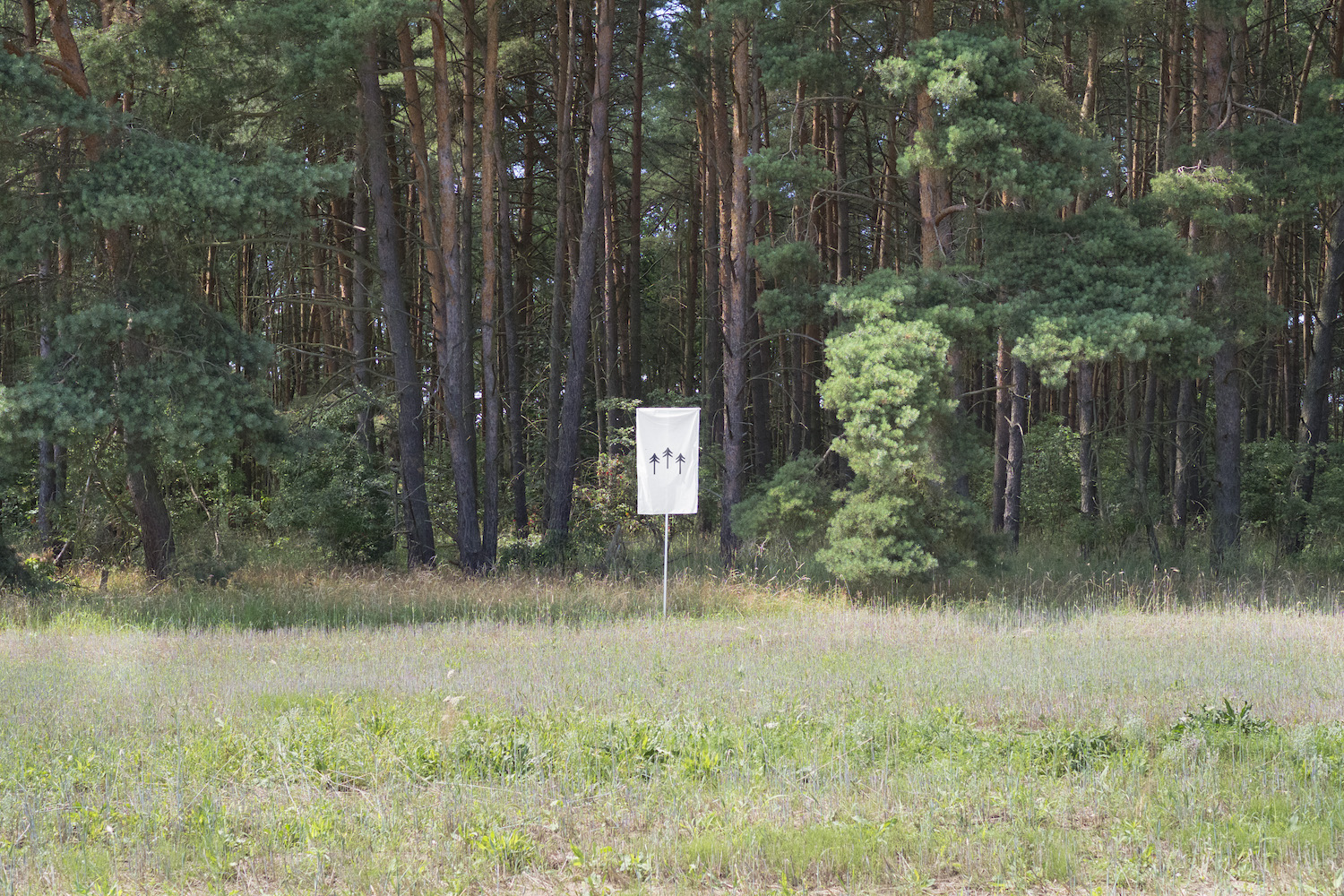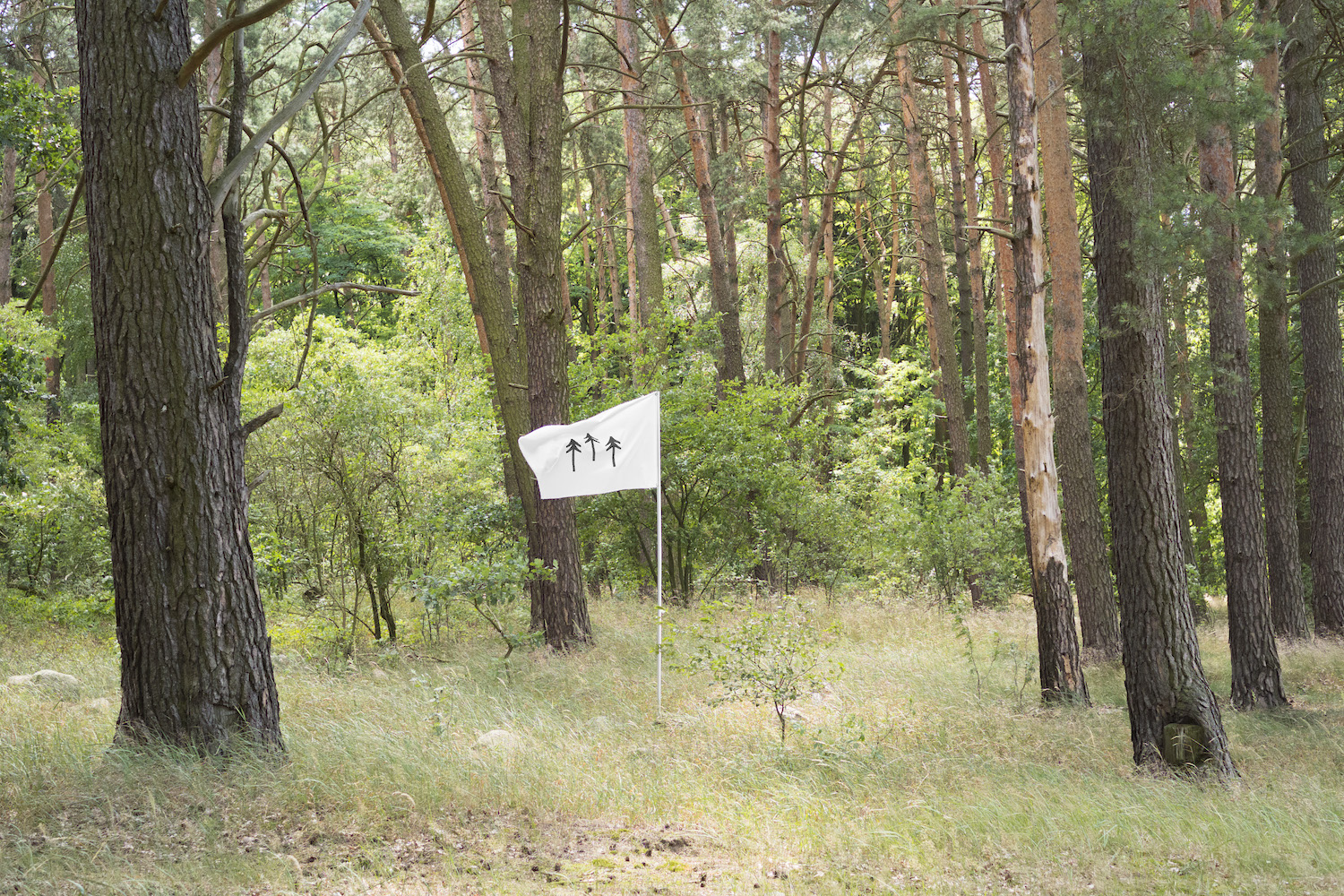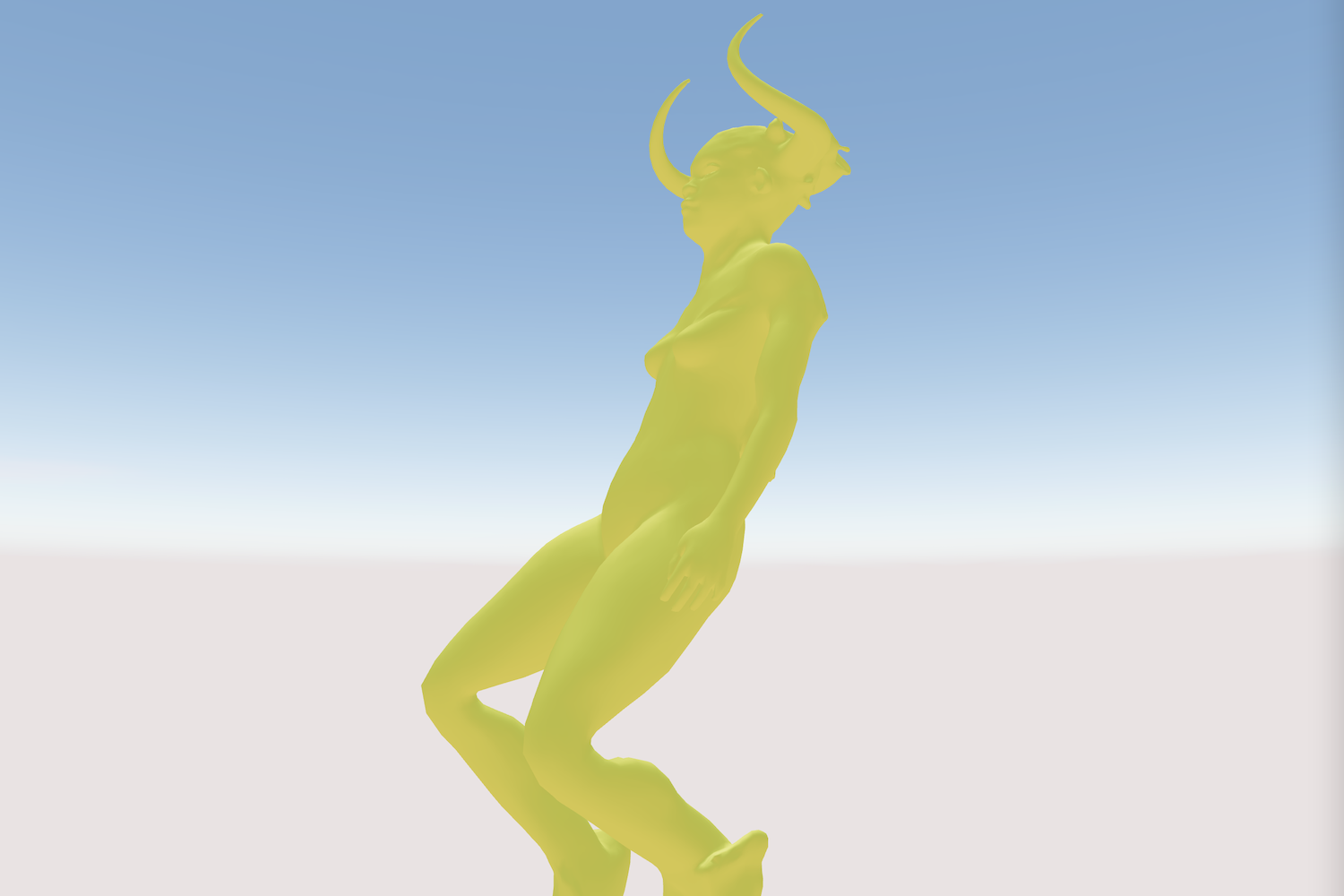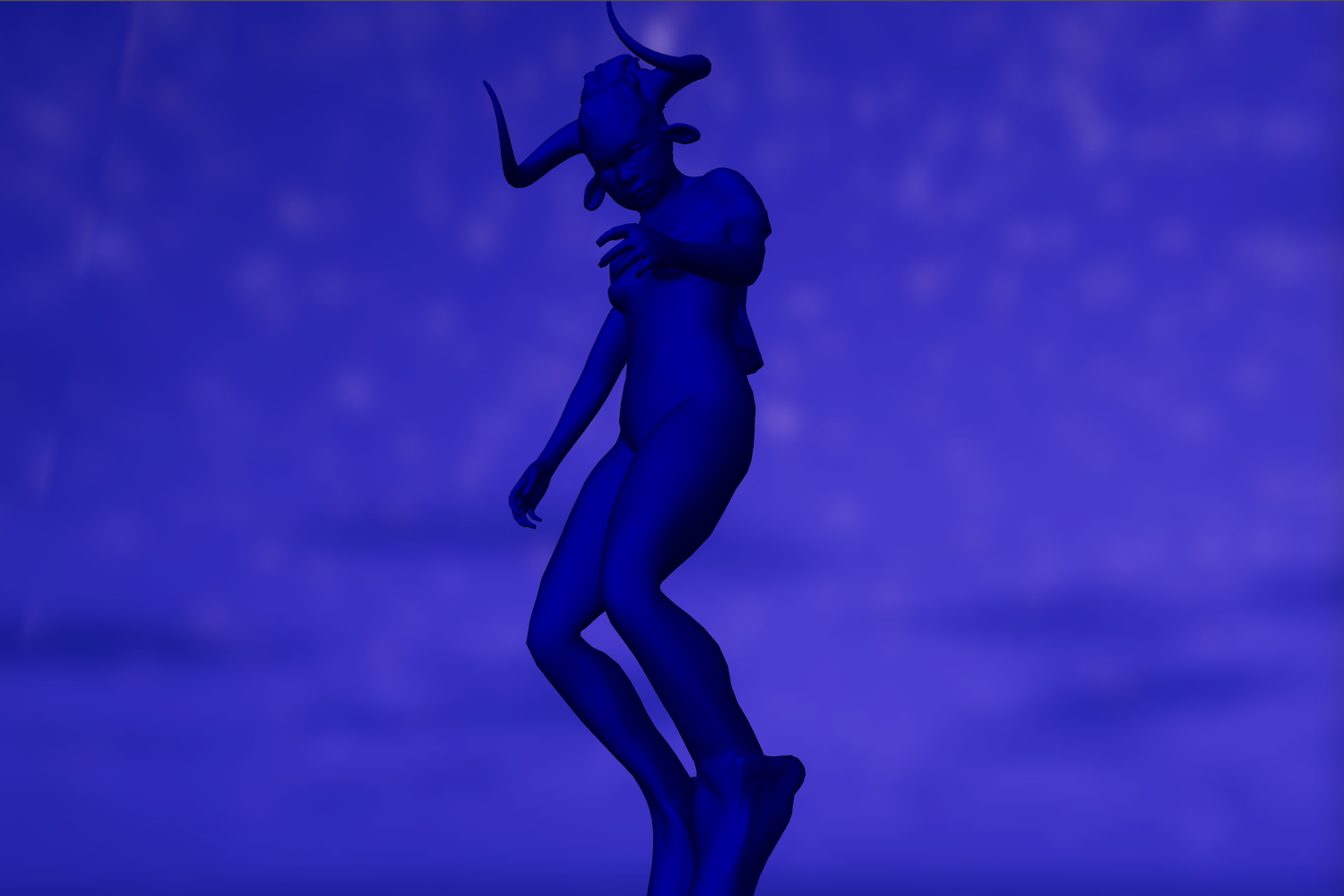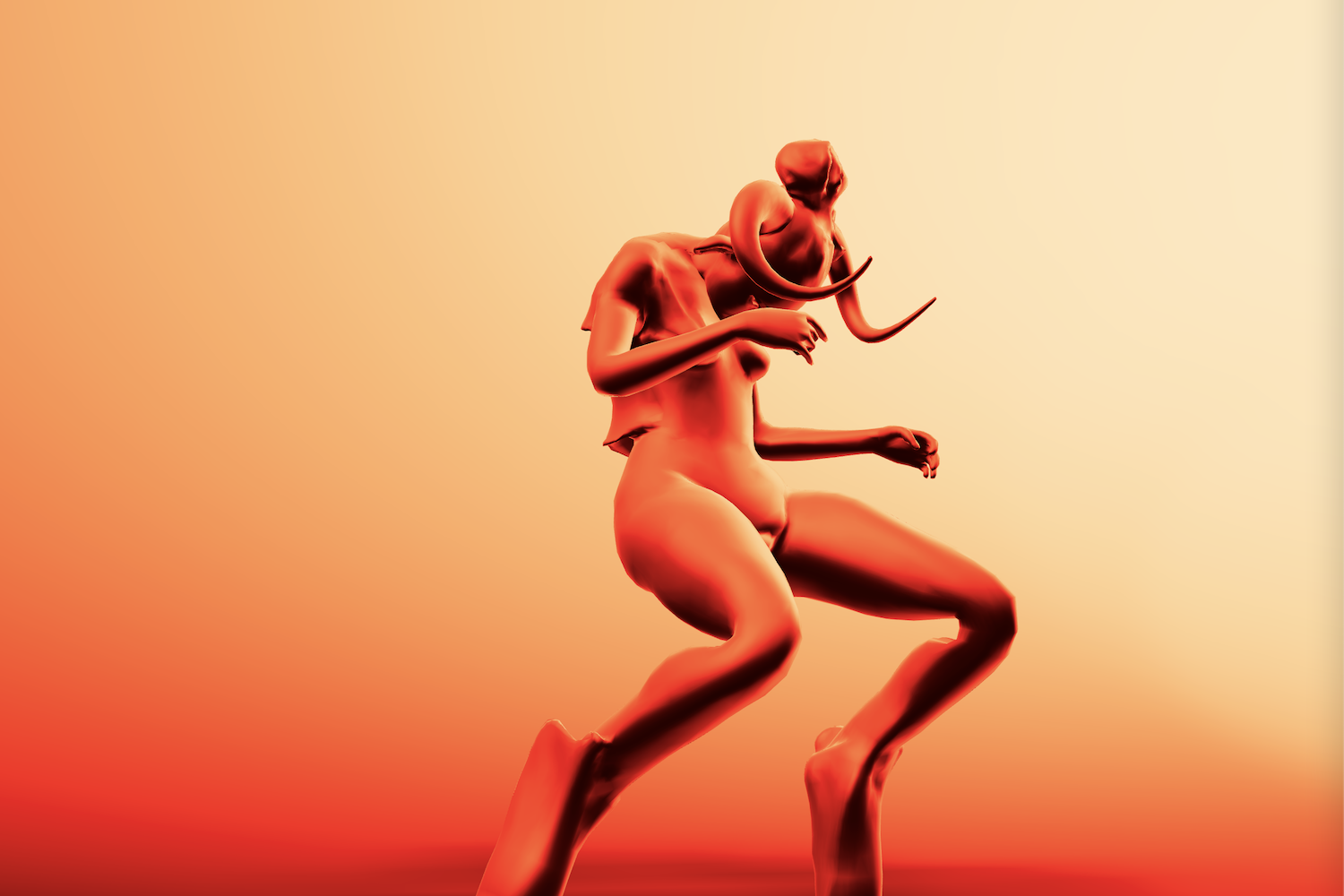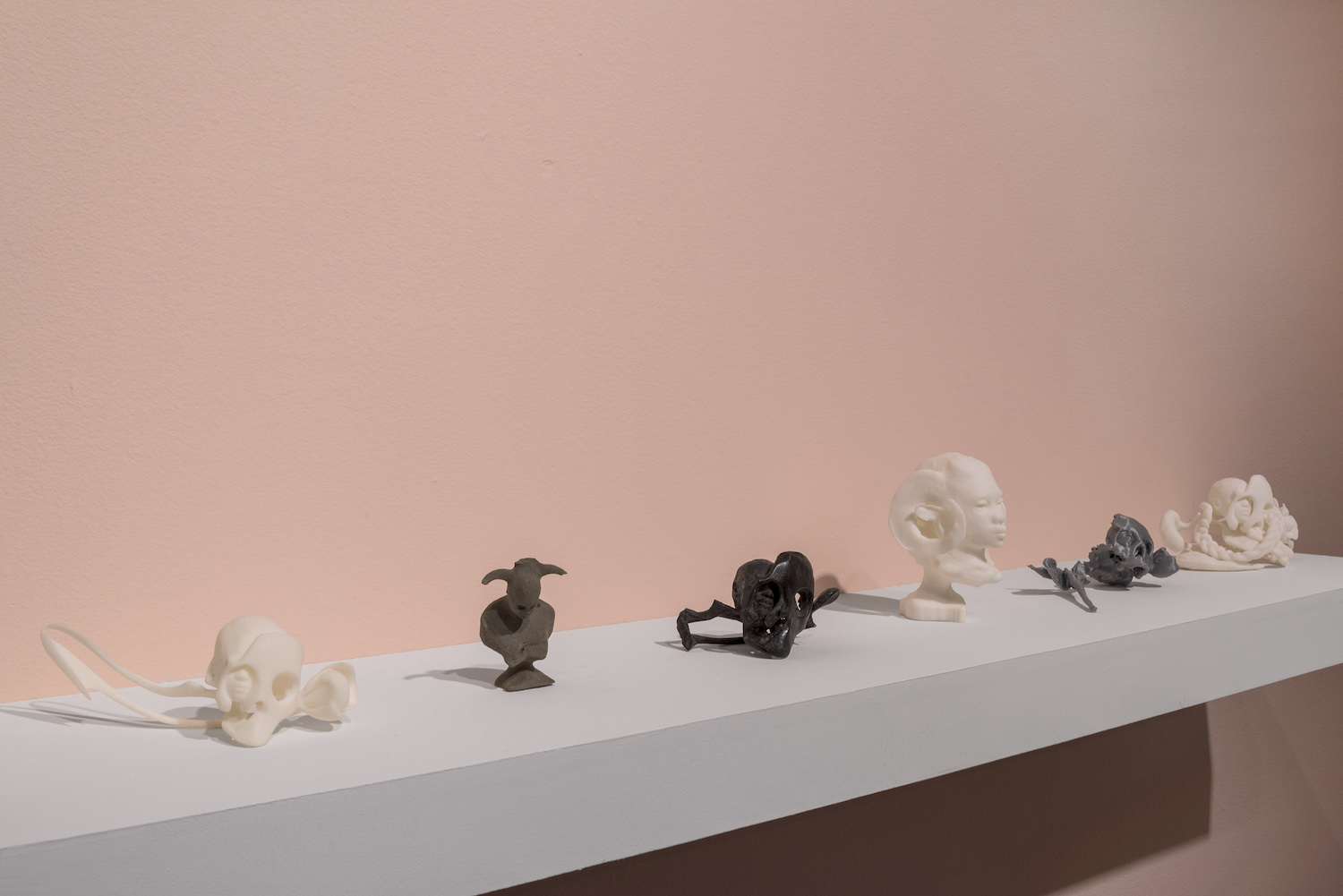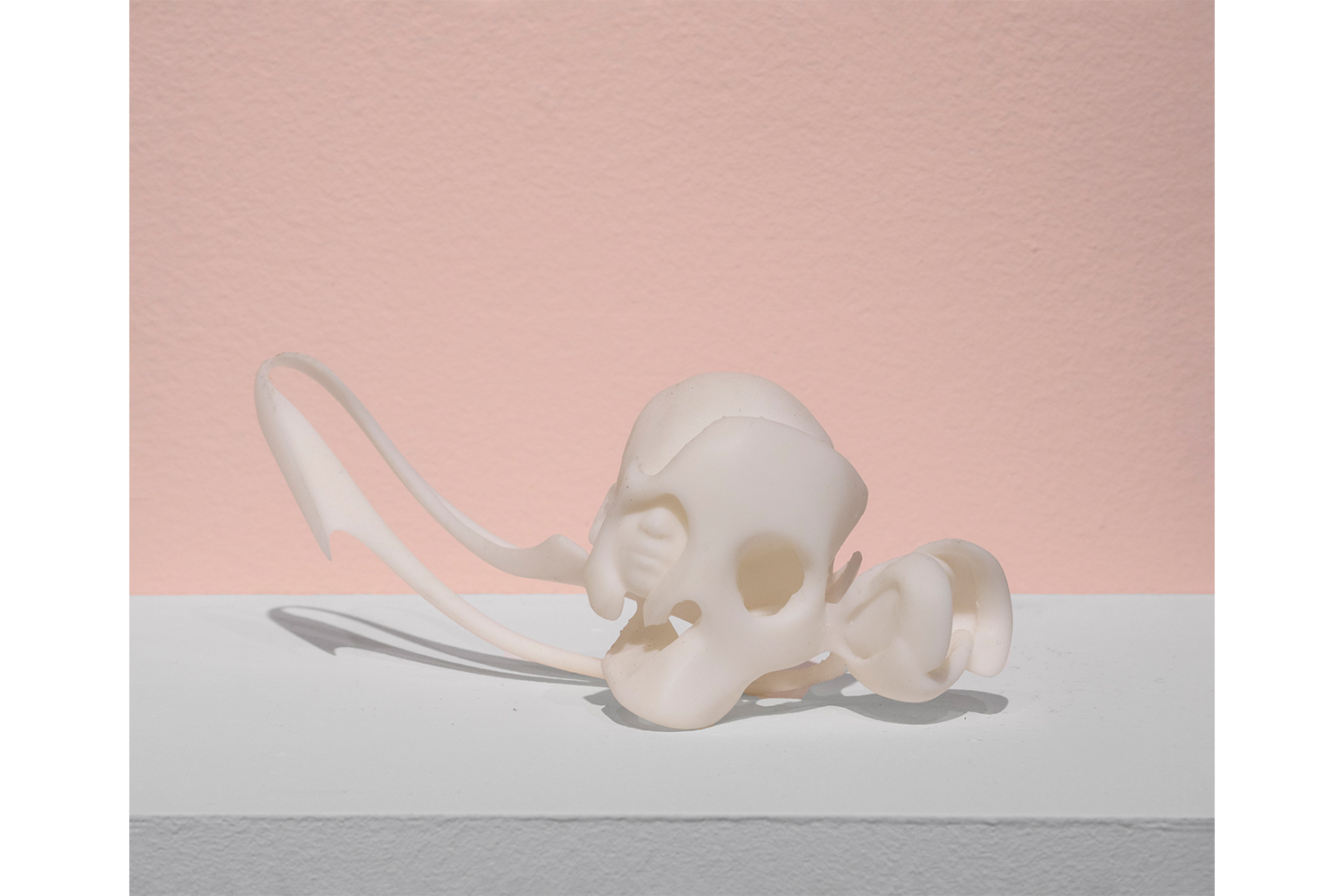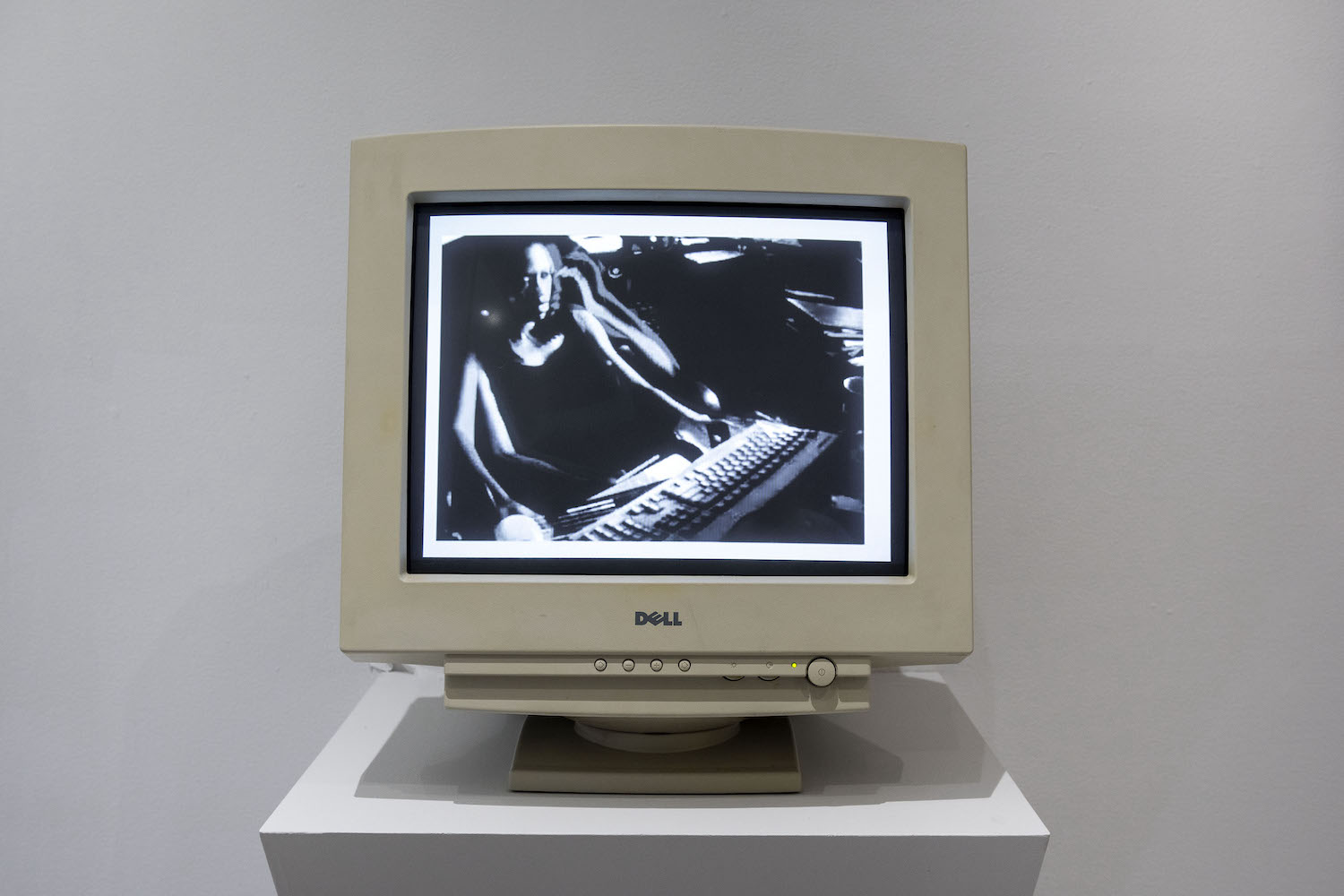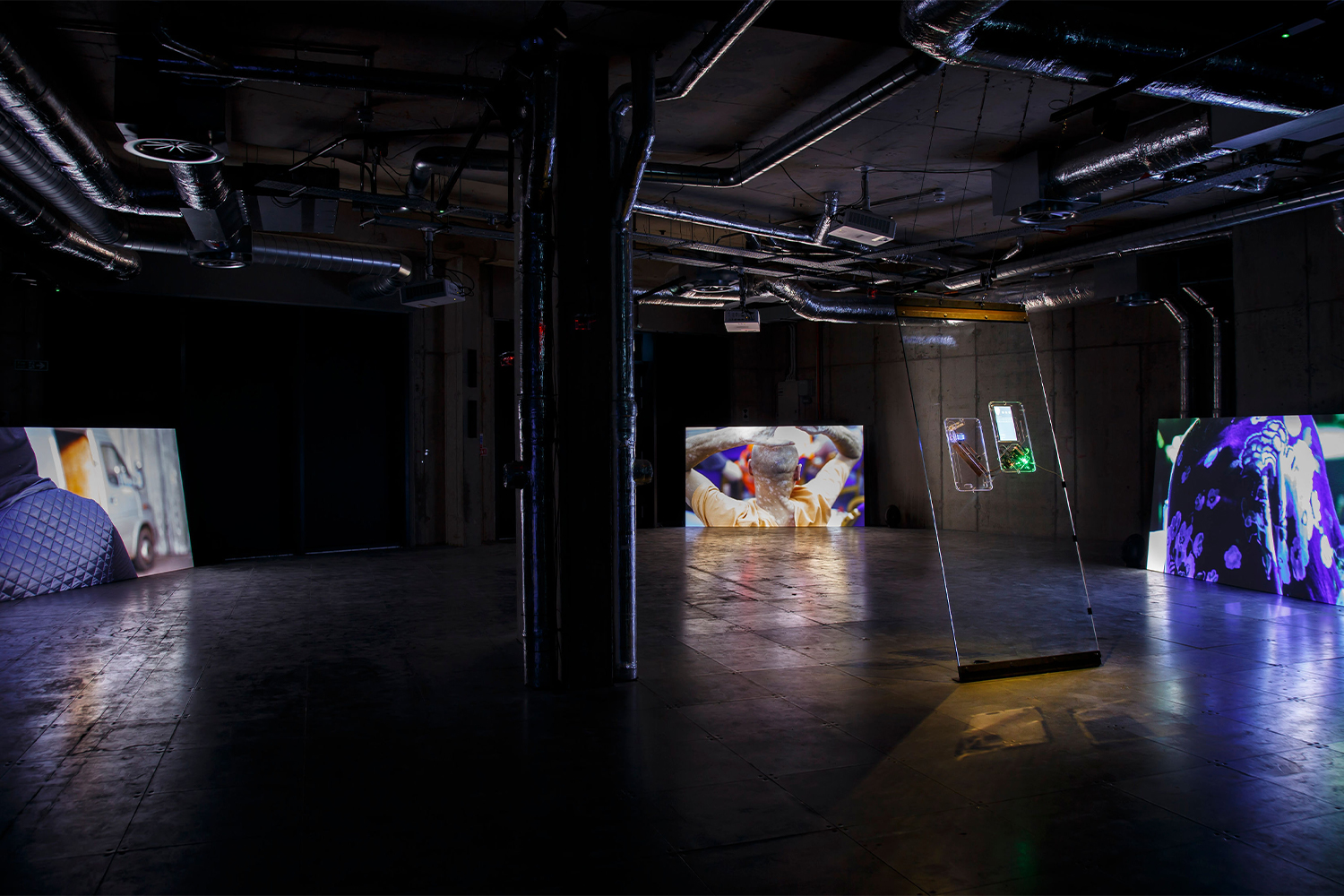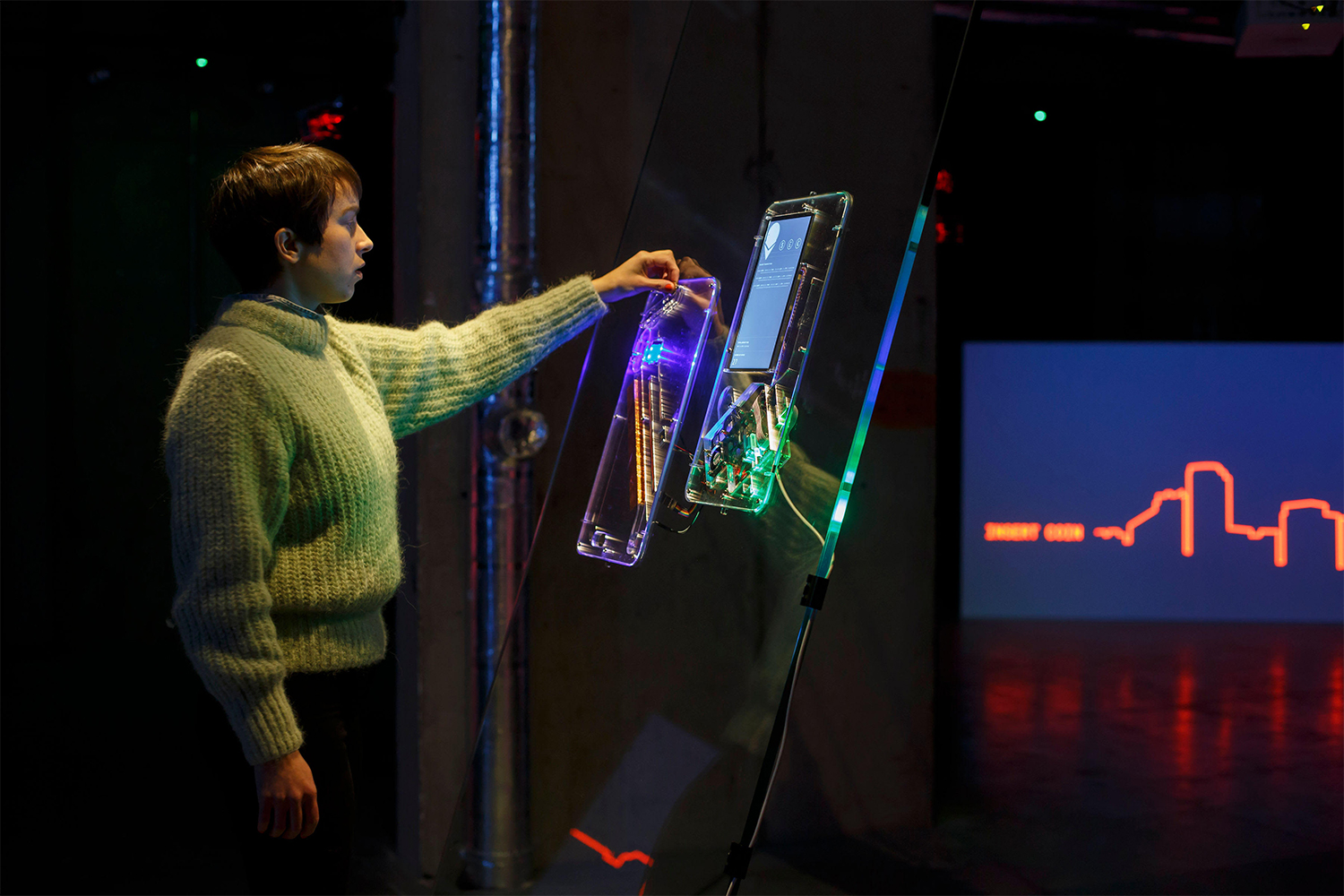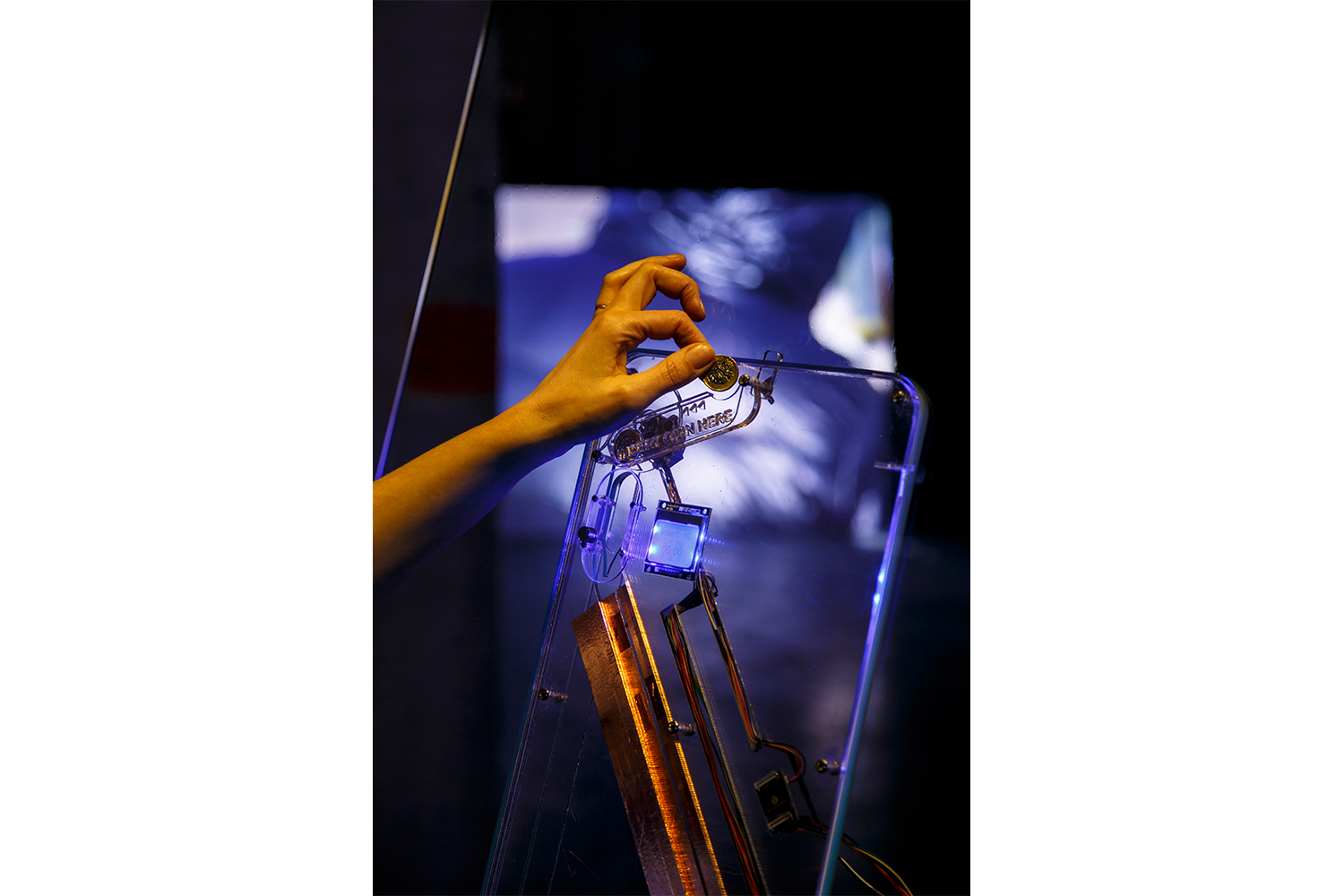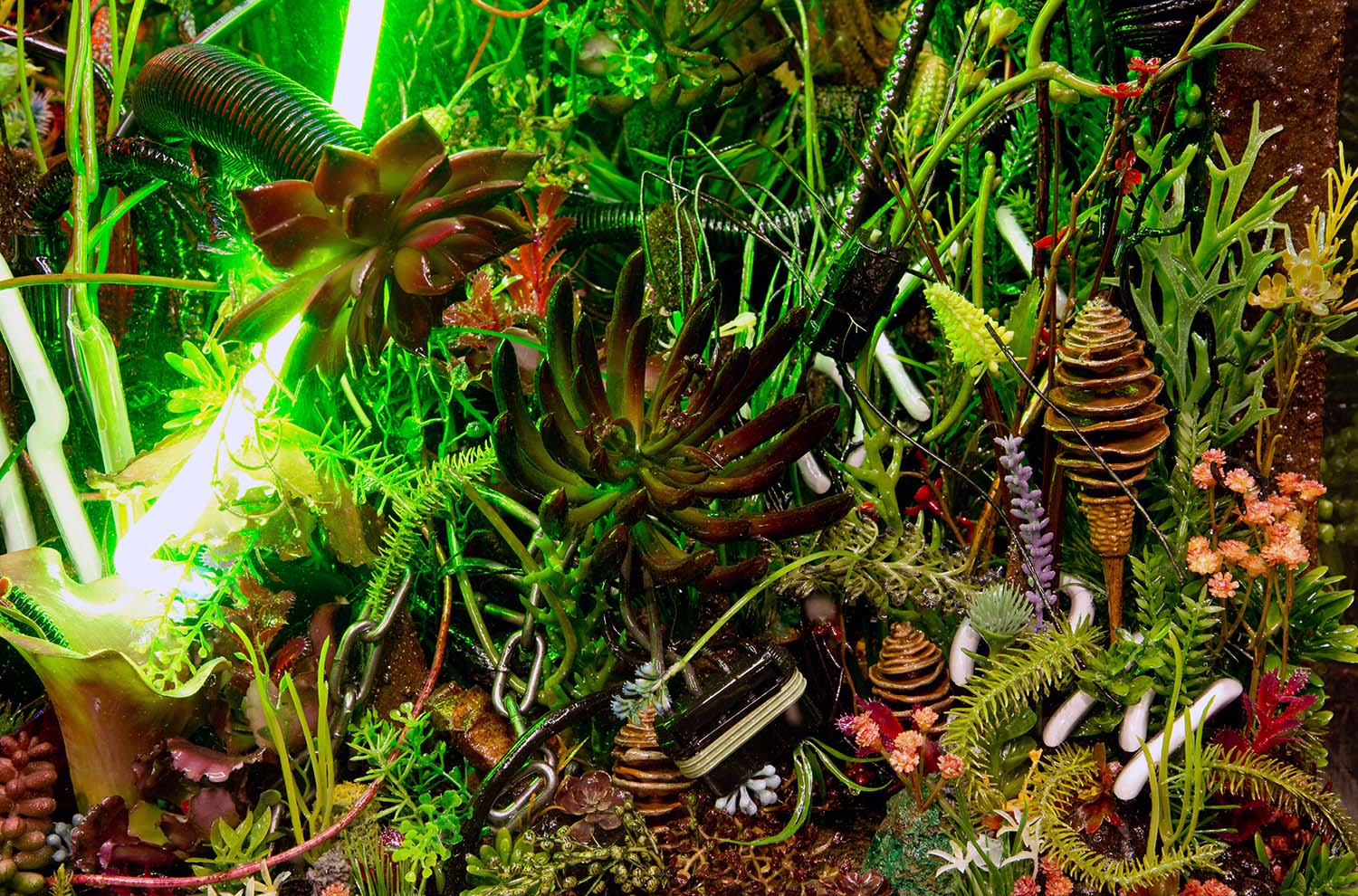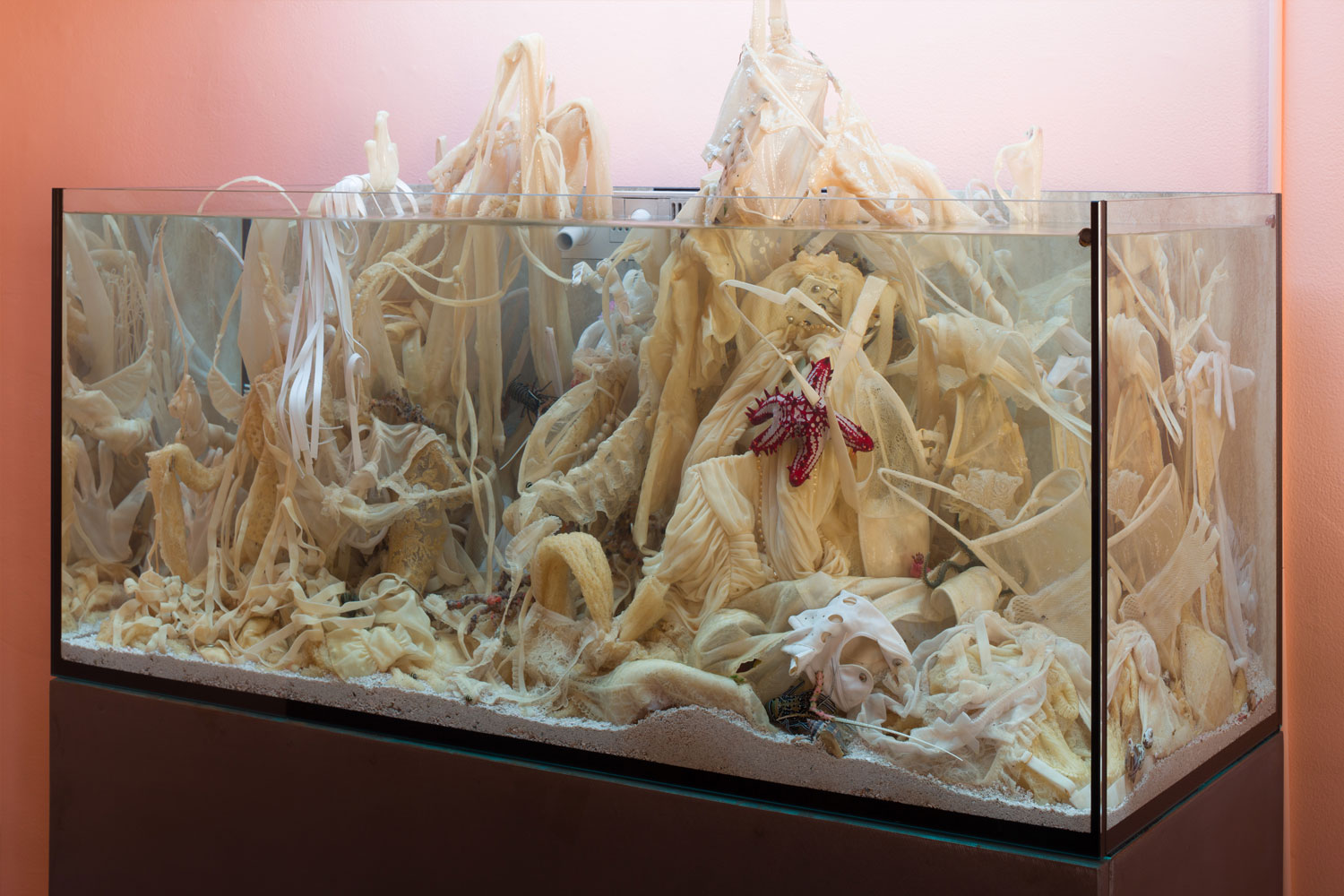With the value of NFTs apparently folded into the volatile fortunes of cryptocurrency, art and money’s deadly dance appears to have accelerated. Given the prevalence of new hegemonic actors and hierarchies in the cryptosphere, DeFi’s potential to democratize finance looks fated, if not fundamentally compromised. In recent years, a new community of scholars and commentators has surveyed the prospects for decentralization. Here they reflect on crypto art’s place in capitalism’s changing state.
Alex Estorick: On balance, does the blockchain do more to challenge or to renew capitalism? Are there substantial and not simply hypothetical ways it challenges capitalist power?
Ruth Catlow: No technology can challenge or renew capitalism in and of itself. Blockchains as creators of bank-and-state-free money are certainly a challenge to the role of nation states in global capitalism. But the question is whether this supports or impedes solidarity and collective action to distribute power and resources. We can worry about the libertarian flavor of Bitcoin’s digital money that prioritizes individual rights and freedoms (over state taxes and surveillance) and boils the oceans with its energy-hungry protocol. And at the same time, E. Stefen Deleveaux of the Caribbean Blockchain Alliance talks about the power of blockchains “to enable the fight against imperialism” by democratizing access to basic financial services like remittances, currently unavailable to many under the global financial regime. Meanwhile the cultures surrounding programmable blockchains like Ethereum — that are the basis for tokenization and NFTs — make it newly possible to attach collective decision-making tools to cryptocurrencies and the behavior and distribution of digital assets in entirely new ways. This lends some validity to the claims of the democratizing potential of blockchains.
Blockchains need an injection of feminist economics. Without a focus on care and the participation of more diverse human and more-than-human interests, the blockchain will accelerate and amplify the most damaging aspects of capitalism by incentivizing automated extraction of value from living systems with no regard for the health of individuals, society, or the environment. This is why the vision and realization of cooperatively owned and run cultural projects like Resonate and DisCo, and the artist-led UBI project Circles, are so important.
Aude Launay: As with every technology, blockchain does what one uses it for. So, on the side of the corporate and the state applications, we may not be on the edge of a revolution, but there are already countless blockchain-based projects that are deeply challenging the capitalist system — DeFi protocols and DAOs (decentralized autonomous organizations) — and putting people in charge of their own interests.
Max Haiven: Though I have heard and read many theoretical arguments, I have yet to be convinced that blockchain technologies can actually challenge capitalist power as it stands today. To me, to truly challenge capitalism would mean more than simply creating the circumstances where people can compete with one another in the market more fairly. It would mean devising fundamentally new ways of organizing the cooperation between humans, and between humans and the more-than-human world (e.g. “nature”). I think there’s some very interesting potential in emergent technology for this revolution in human cooperation, but I think, in part because of its origins in Bitcoin, in part because of the sheer quantity of fast money flying around these days, the vast majority of blockchain schemes tend to be stained by the belief that, if only we could perfect money, exchange, and competition, we would be able to transform society. But the problem of capitalism is not and has never been about the exchange of wealth; it lies in the way in which a society produces value. Value production isn’t just a matter of marginal utility, which is to say getting people what they want. It’s a question of how cooperation transforms the material world. I’m certainly curious to see if these technologies have the potential to allow us to organize and coordinate our cooperation for the production of value differently.
Max Grünberg: If we think of capitalism as a mode of production characterized by profit-oriented commodity exchange and private production, protected by bourgeois laws and property rights, it is questionable whether blockchain is the technology to overcome this logic, as money is woven into its core. Smart contracts are nothing but a mechanism to control automatically the flow of money on a blockchain. Vitalik Buterin (co-founder of Ethereum) once described how blockchains automate away the center. But sometimes these centers have a function in protecting workers, and one should ask oneself who benefits from this decentralized and automated future. Is it really the workers or the entrepreneurs building the infrastructure?
Denise Thwaites: I think we are at a point in public discourse where we need to question what we mean by “the blockchain.” There are different kinds of public and private blockchain, as well as other distributed-ledger systems that ride the blockchain wave of interest. These have the potential to challenge or further entrench capitalist ways of organizing labor and producing value. For every grassroots communitarian approach to using blockchain, we can find major banks, auction houses, and tech companies staking their territory in this technological field.
AE: Are there aesthetic or political criteria by which we might evaluate crypto art, or can we only judge it on a market basis?
AL: I do not see why crypto art should be evaluated in a different way than any other form of visual art. And I am not talking about medium specificity here, since crypto art can be any kind of art attached to a token which is, in a nutshell, nothing more than proof of ownership of the token itself. What strikes me is more the use of the term “art” than the use of the term “crypto” here. The use of the appellation “art” for productions as diverse as internet memes and animated GIFs with a humorous or aesthetic aim, and the presence of these objects — possibly produced by professional artists but equally possibly by “everyone” — on NFT platforms, operates a blurring of the traditional castes of the art world that I find fascinating.
MH: I think in the latest gold rush for NFTs there’s a fairly transparent relationship between price and artistic value: those works that tend to be seen and circulate are those that have jaw-dropping prices attached to them. I understand that there are very interesting and thoughtful artists working in the space, and from what I’ve seen their work tends to be more conceptual in nature, asking its audience to question the very logics, grammars, and technologies on which they are based. I think both of these tendencies are the result of this medium — if we can call it that — being quite new. Like most contemporary art, newness is perhaps the most saleable quality. I’m curious: if indeed the NFT and crypto art have any durability, what will art critics in twenty or thirty years time make of it and what kinds of analysis and judgment will they apply to separate truly remarkable work from the endless derivative dross? Frankly, most of it looks fairly derivative to me, often derivative of fan cultures that reflect the interests of collectors, who tend or appear to be young men with little to no interest in art history.
DT: Recently, New Zealand artist Jess Johnson (in conversation with Jane O’Sullivan) compared the dynamics of certain NFT markets to her experience at zine fairs, where creative communities engage in playful experimentation with new ways of making and distributing their work. While dominant NFT market aesthetics seem to favor graphic Beeple-style designs imbued with memes and pop culture references, it will be interesting to see (a) if this form of cultural production continues in the years to come, and (b) whether a distinctive aesthetic or political criteria emerges to identify “seminal” NFTs, in the way we now retrospectively analyze zines. Will these criteria be “purely aesthetic,” or influenced by the historic price they achieved? As with any form of art, we may find it hard to disentangle these social, economic, and cultural hierarchies from our aesthetic judgments of NFTs.
RC: The market seems to know what it likes: firsts, established brands, and art establishment endorsement. But it has also been heartening to see a number of early pioneers of net art like Auriea Harvey, Rhea Myers, and Tamiko Thiel find a market for conceptually rigorous, critical, and net-native works. Terra0, the self-owned forest, is an early example of a blockchain-based artwork about the politics and possibly the governance of living systems on the blockchain. Furtherfield’s CultureStake goes one step further in decentralizing power and resources in the art world by inviting the public to decide what’s important and then recording their answers on untamperable blockchains. This web-based voting system underpins the Peoples Park Plinth program in Finsbury Park, allowing people to vote on the types of cultural activity they would like to see in their locality using quadratic voting (QV) on the blockchain to put decentralized tech to radical, new, emancipatory use in the cultural sector. We can also imagine this system being put to use by a city council needing to find out which new artwork should occupy a recently vacated public plinth.
MG: Although, like with the rest of the crypto community, it might be an ethnographic goldmine regarding capital’s power to constantly create the other from within, concerning aesthetics I despise crypto art for the most part as it is a parochial form of art, which for the most part is only created to flatter the Lamborghini-driving cohort of early crypto accumulators. All the recurring motifs of Elon, doges, and symbols of various crypto currencies simply reveal how limited this imaginary really is.
AE: What can the market for NFTs and other decentralized digital assets tell us about capitalism, where it’s going, and how to contest it?
MH: Decentralization is not, in and of itself, a means towards economic or social justice. A territory ruled by rival warlords, rather than a central government, is a decentralized hell. I feel in many cases that the crypto discourse has substituted decentralization for meaningful politics, and without that politics it’s very difficult to actually confront capitalism and what it’s doing to people on the planet. Capitalism can happily function in both centralized and decentralized forms, and indeed it stages competition and rivalry between centralized and decentralized forms as part of its ongoing reproduction. Capitalism’s historic dynamism, and its ability to adapt and change and so sustain itself, depends on always creating the conditions within which a new competitive class emerges to displace the old ruling class, or to carve out a space for itself. Unless those designing new digital platforms directly aligned themselves with actually existing common people struggling for dignity, rights, and change, my fear is that they will be confined to offering an aspiring ruling class new tools with which to battle for a position with their predecessors. My sense is that even within the limited realm of art, the emergence of these technologies is going to do precious little to fundamentally challenge the pyramid-like structure in which a handful of celebrity artists receive monumental fortunes while the vast majority suffer in obscurity and poverty. Perhaps it will be a slightly less steep pyramid, but it will remain a pyramid. Meanwhile, there is the broader issue of the huge number of people on the planet who would love to be able to exercise and share their creativity, but who are functionally prohibited from doing so because of endemic poverty, overwork, or simply being born in the wrong place at the wrong time. If we are truly interested in liberating human creativity and creating a field of culture open to a diversity of voices, within which the best and the brightest might emerge to inspire us all, I’m not sure these technologies do much for us, or at least do much that other technologies don’t already do.
RC: The market for NFTs is the inevitable extension of a digital realm of an art world desperately seeking new markets, new liquidity, new forms of speculation. Financially speaking, Beeple’s Everydays: The First 5000 Days (2021) was a pretty good reenactment of Hirst’s For the Love of God (2007): a work bought by a consortium of art collectors/speculators of which he was a member. And now Hirst is repaying the complement with The Currency (2021) — “5 years in the making ” — on the Palm platform. The talk of decentralization has a hollow ring while it further centralizes art world and crypto world power.
DT: In Flash Art’s recent panel, Geert Lovink discussed the alchemic dimension of these technologies and how they’re attracting creators whose artistic livelihoods might otherwise be at stake. In many places in the world, including Australia, artists are exploring NFTs as a way to monetize their work in an era of drastically diminished government funding for the arts. So unlike the typical crypto-libertarian impetus to escape state control, NFT markets can seem like a desirable option for artists responding to the conditions of the neoliberal state that increasingly relegate art to an activity funded by the private sector. Silvio Lorusso has discussed how the forced entrepreneurialism of creative workers in neoliberal capitalist labor markets is impacting production, so we might consider how the entrepreneurialism of artists participating in NFT markets continues some of these trajectories.
MG: If the technology establishes itself in the future, NFTs will lead to a further commodification of everyday life. Not only will cyberspace be tokenized to reintroduce scarcity into the digital realm, but we will also witness the tokenization of the analog world, with augmented reality settings overcoming the divide between the two.
AL: Beyond questions of ownership and digital scarcity, NFTs hold out the possibility of major changes in the way art is distributed and artists remunerated, but will they render the models of the art world obsolete? Until now, the main focus has been on the way NFTs democratize the commercialization of each and every thing one can label art. But I do not consider art to be the most promising use case for NFTs. I think of the tokenization of physical assets and the way that this can open entirely new areas in circular and sharing economies as much more groundbreaking!
AE: For many, blockchain technology is a tool to resist the centralized control of systems across tech and finance sectors. But might it also serve to address contemporary art’s own centralized controls? Given the dominance of certain actors within the sphere of crypto art, is the market for NFTs really the best model of decentralization?
DT: Before we leap to technology to solve the problem of centralization, it’s important to consider whether in fact there is already a history of decentralized forms of working and alternative economies that have supported artistic communities and livelihoods, from which we can learn. Across the world, we find different models of artist cooperatives and barter economies, as well as alternative spaces for the presentation and production of creative work. This reflects Howard Becker’s thinking from the 1980s around the multiplicity of dynamic art worlds that exist across the planet, in contrast to a single centralized global art world. DisCO is a great project that emerges from the Guerilla Media Collective’s long engagement with cooperative ways of working in our contemporary, digitally enabled context.
RC: The most hopeful work we see builds technologies around the needs of particular communities and cultures rather than the other way around. It takes account of more than just the financial needs of its members. Black Swan DAO is a good example of artist-led peer-to-peer funding and community organizing. Hic et Nunc was another beacon in early 2021, described as “less decentralized market, more artist commune.” In both of these cases, communities of artists and techies, coordinating via decentralized platforms like Discord, experiment with different forms of creation, collaboration, and value exchange enabled by blockchains and NFTs. The recent overnight closure of Hic et Nunc in fact exemplifies the value of Web3’s decentralized model as users transitioned to other marketplaces such as Ojbkt.com while remaining in control of their content.
AL: Among their many mind-blowing applications, blockchain-based organizations such as DAOs have the potential to re-empower artists and art-world workers. I think it’s important to keep in mind that attaching an NFT to something does not necessarily mean adding a layer of decentralization to it. Most NFT data is stored not on a blockchain but on servers owned by major companies such as Amazon. Whereas, artists gathering and pooling resources to better allocate funds collectively, isn’t that a better model of decentralization? I am really looking forward to HACKUMENTA in Athens this September — the first decentralized and peer-to-peer art fair.
MG: Only the proof of ownership is stored on the blockchain, while a handful of marketplaces control the whole NFT market. With NFTs we’ve gotten rid of curators and gallerists and replaced them with algorithms that decide which artwork to include on the front page of an NFT marketplace. I am not sure whether this is progress.
AE: NFTs seem to put more of the creativity in the hands of the owner or collector than ever before. What might be the long-term implications of this?
MH: I suppose my question would be: creativity of what kind? And what’s the good of this creativity? If by creativity we mean market power, then I’m not sure creativity is the best term. If by creativity we mean the ability to see one’s imagination manifested in the world, it strikes me that owners and collectors remain fairly confined. To my mind, creativity is both a power to manifest the imagination on an individual level, but it also somehow represents the power to transform the world together. In that sense, I’m not sure I see substantial creativity being placed in the hands of anyone in a transactional field based on notions of private property and artificial scarcity. We are all living in an illusion of private property — that is an illusion that was created during the birth of capitalism and explicitly forged in colonialism and imperialism, enforced with tremendous violence. Because private property is fundamentally an abstraction, it is inherently and inevitably internally inconsistent. That inconsistency is especially evident when it comes to material assets, things like intellectual property or, as we are discovering, digital assets that are otherwise completely reproducible. Because of these internal inconsistencies the field of private property is always going to offer fascinating opportunities to reveal or play in the contradictions. This isn’t in any way new. The Dadaists and conceptual artists of the twentieth century, for instance, made many pieces that teased or sought to undermine the way in which their works could be commodified: Duchamp’s Tzanck Cheque (1919), for instance, or Sol LeWitt’s play with contracts. Play within and even to a certain extent against the regime of private property is permitted; what is not permitted is to seek to abolish private property as such. I think art should move us towards the horizon of this abolition, in the name of liberating true creativity.
MG: NFTs have the advantage that they can be easily stored and you don’t have to worry as much about decay of digital files. But if you are unfortunate enough to lose your private key, you will also lose access to your NFTs. The immutability of blockchains can be cruel in enforcing the puritan ideal of radical self-reliance. If you are one such sucker, it is your fault alone. The other downside of NFTs, which also stands in the way of their success, is that it is harder to present them in the physical space, which contradicts this whole rationale of buying art to brag in front of your friends. In the next hype cycle, we will certainly see a market for hardware devices for displaying NFTs.
AL: I have to say that I am really surprised not to see much conversation within the art world about programmable art and the way those layers or art legos can be activated by the owner and, thus, are leaving some influence over the artwork to its collector. Platforms like Mutagen are discretely transforming the meaning of authorship within the arts by allowing for a co-creation of sorts, which, if programmed by the artists, nevertheless opens authorship to the artwork’s very investors.
RC: NFTs can offer more creative control to a whole range of art-world stakeholders. Async offered an early example of programmable artworks, launching with First Supper, that enables artists and collectors to collaborate in the display of digital artworks over time. But what most excites me is the potential for different art-world players to see themselves connected in new ways. For instance, Helen Knowles’s Trickle Down, A New Vertical Sovereignty (2020) invites viewers to insert a coin to activate a four-channel video installation. The videos depict scenes of different auction settings: from fur-coated art auction attendees, to market traders hawking goods from the back of a van. The coin is converted to crypto before being distributed to all those involved in the creation of the work, including the video subjects, gallery workers, workshop participants, etc. in a performance of capital distribution that rewards even the subject of the artwork.
AE: Is blockchain the future or is there maybe another or better data structure on the horizon that is more cost-efficient, secure, and scalable?
MG: The world of distributed ledger technology (DLT) is a tribalist space, in which most projects try to trash everything around them to increase their market share. It is hard, even for someone with a decent understanding of DLTs, to tell which expert is right. In the end, all the speculation bubbles are built on the ignorance of investors. But there are interesting alternative data structures out there, like distributed hash tables (DHT) as proposed by Holochain or directed acyclic graphs used by IOTA, which break with the idea of having one global state created by chaining blocks, which is assembled by a consensus mechanism through mining or staking. A lot of criticism is hurled at these heterodox approaches. Unfortunately, my technical understanding does not suffice to assess whether it is justified or not.
MH: I have no doubt that new technologies are on the horizon. But I’m not sure that technology will solve the underlying sociological and human problem. So long as these technologies emerge from and seek to renovate the market, they participate in a capitalist logic that sees the market as a solution to all our problems, rather than the source of our problems or the framework within which our problems express themselves and become unsolvable. What would it mean to start developing these technologies from a place of real, committed solidarity with struggles against capitalist exploitation, neocolonialism, racist inequality, gender-based violence, or a whole host of other problems that stem from the way that we’ve organized our society? Perhaps a more direct response to your question, what does better mean here? Greater efficiency, security, and scalability within the current economic order is inevitable, but to what end? And at whose cost?

